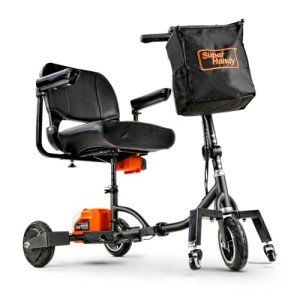What Is Mobility Aids? History Of Mobility Aids In 10 Milestones

Understanding Mobility Aids: Enhancing Independence and Quality of Life
As society continues to age and people progressively seek methods to maintain self-reliance, the need for mobility aids has never been more relevant. Mobility aids, which encompass a variety of devices developed to help individuals with walking or walking around, play a crucial role in promoting mobility, enhancing safety, and improving total lifestyle. This post will check out the different kinds of mobility aids, their benefits, factors to consider for selection, and respond to some often asked questions.
Types of Mobility Aids
Numerous mobility aids are available, each created to resolve specific requirements. The following table summarizes some of the most typical types of mobility aids and their functions.
| Type of Mobility Aid | Description | Best Suited For | Key Features |
|---|---|---|---|
| Walking sticks | A portable stick offering assistance and balance. | People who need very little assistance. | Light-weight, portable, adjustable height. |
| Walkers | Four-legged frames offering stability. | Those needing substantial support while strolling. | Foldable, some with wheels, included safety features. |
| Rollators | Wheeled walkers with a seat for resting. | Individuals needing mobility with the option to rest. | Brakes, baskets for individual items, adjustable height. |
| Wheelchairs | Chairs with wheels for individuals with minimal mobility. | Those unable to walk or requiring comprehensive assistance. | Handbook or powered options, customizable seating. |
| Scooters | Motorized devices for larger distances. | People with minimal stamina however requiring independence. | Different sizes and styles, frequently portable. |
| Crutches | Assistance devices placed under the arms or lower arms. | Individuals recuperating from lower limb injuries. | Adjustable, lightweight, needs upper body strength. |
| Stairlifts | Mechanical devices for moving between floorings. | Users facing obstacles in multi-level homes. | Adjustable for different staircases, automated. |
Advantages of Mobility Aids
Mobility aids provide an array of benefits that can considerably enhance the lives of people facing mobility difficulties. Some significant advantages include:
- Increased Independence: Mobility aids empower people to move freely without relying on others for help, therefore enhancing their self-confidence and self-esteem.
- Enhanced Safety: Using mobility aids can reduce the threat of falls and injuries, especially for older adults or those with balance issues.
- Improved Quality of Life: By facilitating mobility, individuals can take part in social activities, attend events, and delight in life more completely, adding to better psychological and mental health.
- Rehabilitation Support: After surgery or injury, mobility aids supply essential support and stability, assisting in recovery and rehabilitation processes.
- Availability: Many mobility aids are designed to be utilized both inside and outdoors, ensuring that individuals can browse various environments with ease.
Aspects to Consider When Choosing Mobility Aids
Choosing the suitable mobility aid needs cautious consideration of several elements, consisting of:
| Factor | Considerations |
|---|---|
| User's Needs | Assess the level of mobility required; think about whether the user needs momentary or long-lasting help. |
| Physical Limitations | Evaluate the user's strength, balance, and coordination to determine the very best type of help. |
| Setting | Think about the primary environments where the help will be used, such as home, outdoors, or specific surfaces. |
| Weight and Portability | Ensure that the selected device is workable concerning portability and storage, especially for outside usage. |
| Budget plan | Mobility aids can be found in a variety of costs; consider insurance protection and readily available funding choices. |
| Adjustability | Select aids that can be adjusted for height and comfort to accommodate growth or changing needs. |
Often Asked Questions About Mobility Aids
1. How do I understand if I require a mobility aid?
Many factors can indicate the need for a mobility help, such as trouble strolling or stabilizing, fatigue while standing, or a current surgical treatment affecting mobility. Consulting with foldable mobility scooters for adults can provide assistance customized to private requirements.
2. What kinds of mobility aids are covered by insurance?
Coverage varies in between insurance providers, but many offer alternatives for resilient medical devices, which typically includes wheelchairs, walkers, and some types of walking canes. Check with your insurance company for particular protection details.
3. Can mobility aids be utilized outdoors?
Yes, numerous contemporary mobility aids are designed for outdoor use. Rollators, scooters, and some walkers are equipped with functions for stability and ease of usage on various terrain.
4. How do I maintain my mobility help?
Regular maintenance involves inspecting for any wear and tear, making sure that parts such as wheels, brakes, and frames are functioning correctly, and cleaning up the devices as required. Following the manufacturer's standards is essential for safety.
5. Is there a risk of becoming depending on mobility aids?
While some users may become reliant on mobility aids, they are designed to promote self-reliance and mobility. Gradually utilizing a mobility aid can enhance self-confidence and assistance maintain physical strength and coordination.
Mobility aids are important tools that empower people to conquer physical difficulties, promoting self-reliance and enhancing lifestyle. By comprehending the different kinds of mobility aids readily available, their benefits, and crucial elements for consideration, households and caregivers can make educated decisions that best satisfy the needs of their liked ones. With the ideal support, those with mobility challenges can lead fulfilling and active lives, complimentary to check out the world around them.

